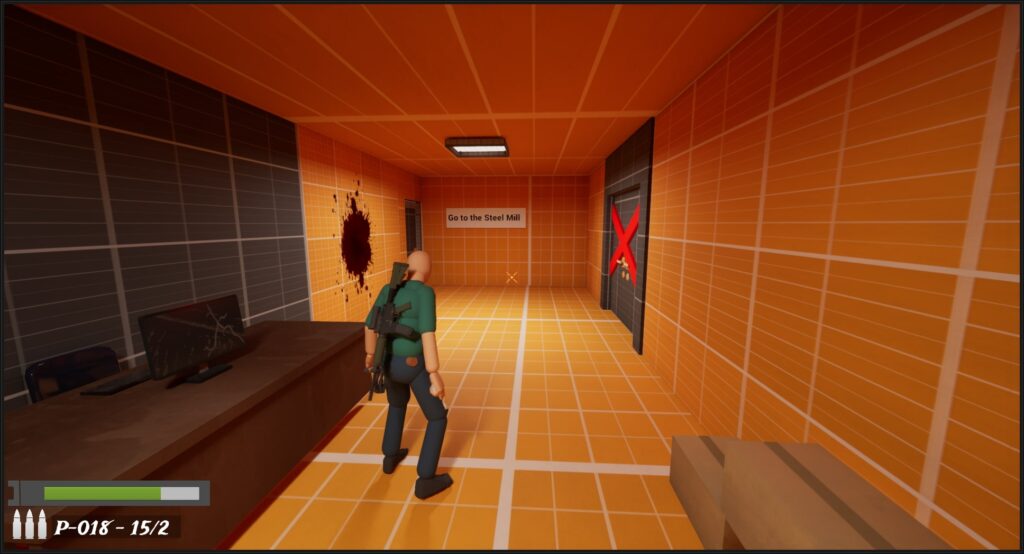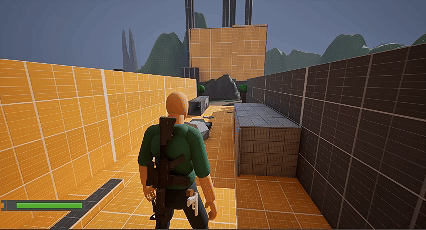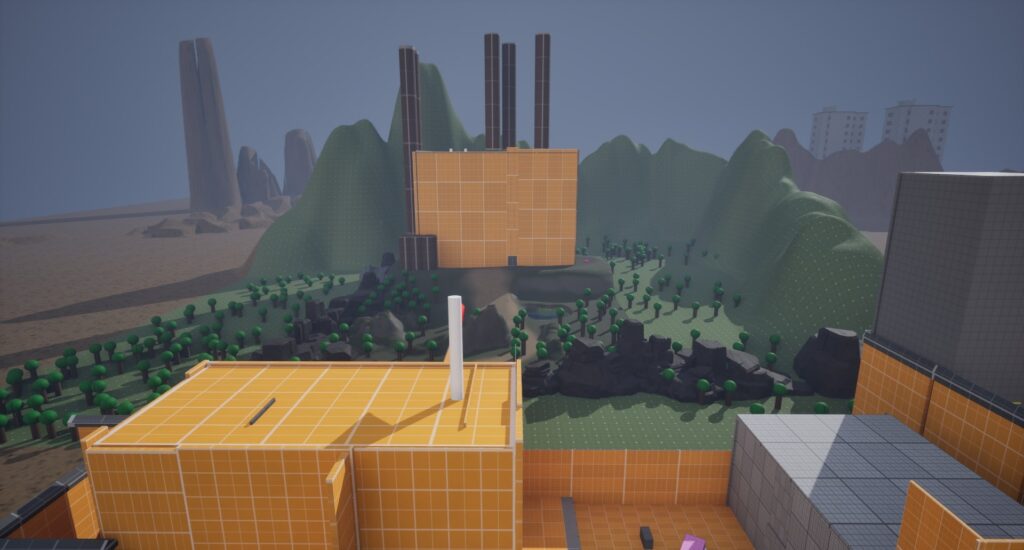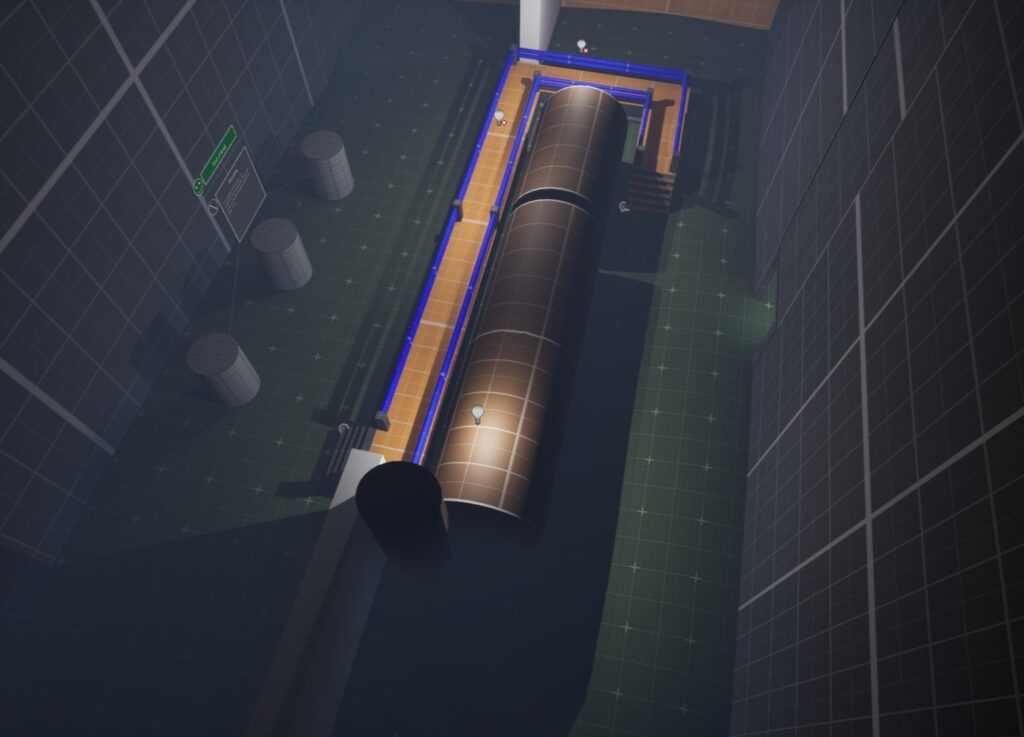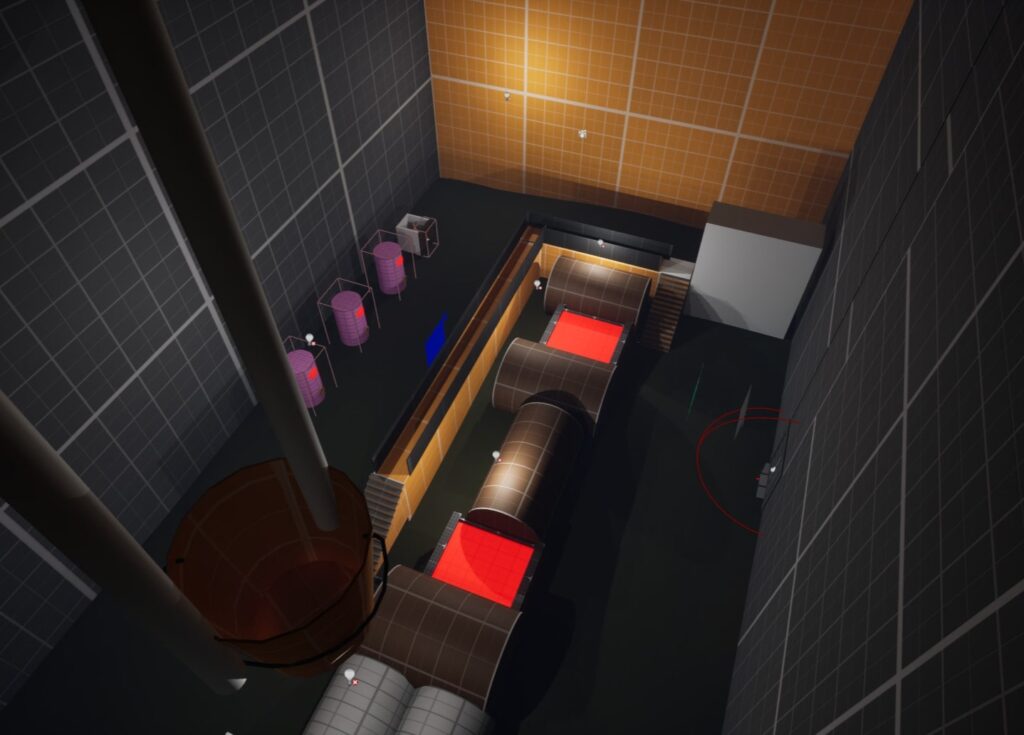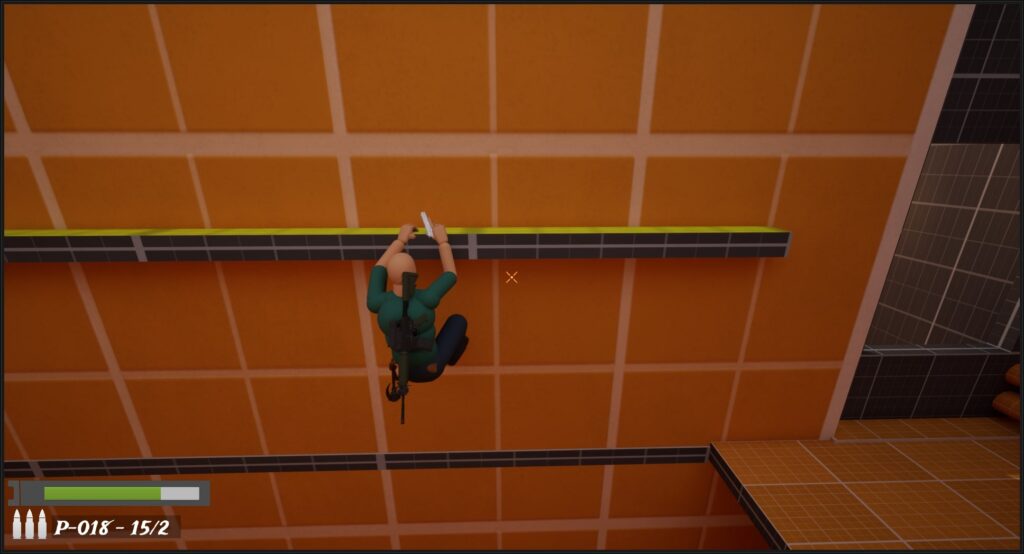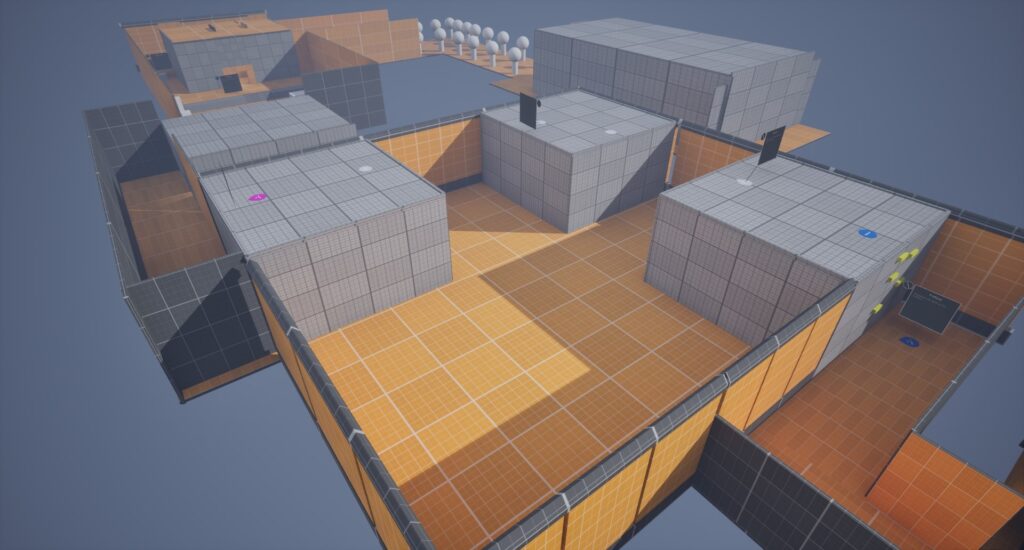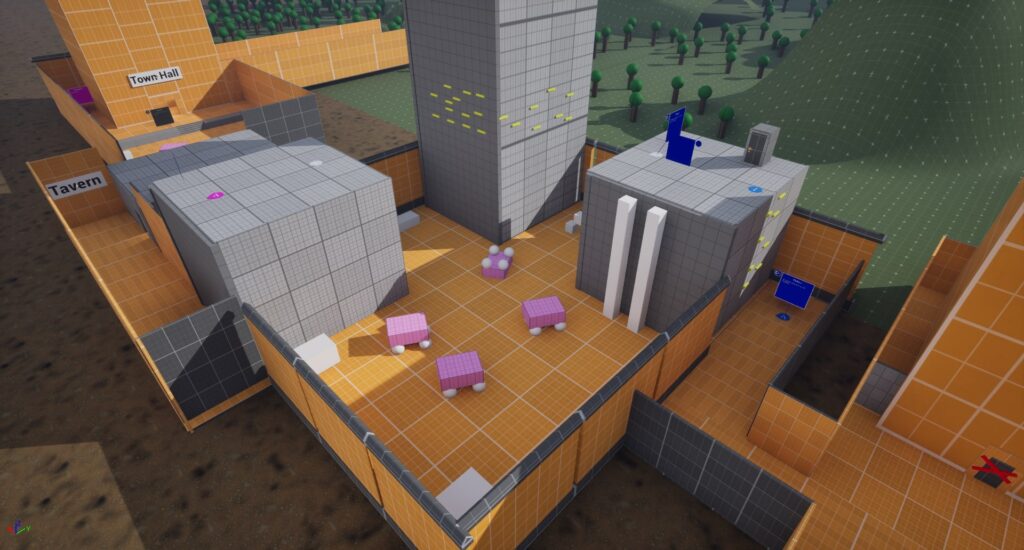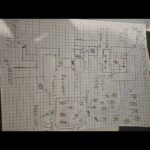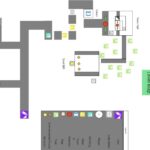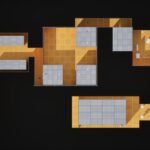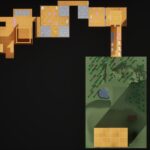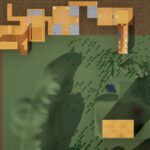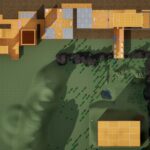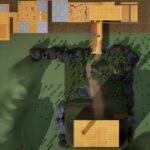Skip To...
The Legend of Edward Low
- Genre: 3D Action Adventure / PvE
- Type: Blockout
- Engine: Unreal Engine 5
- Tools: Blender, JakubW asset pack
- Iterations # 6
- Role: Level designer
Goal
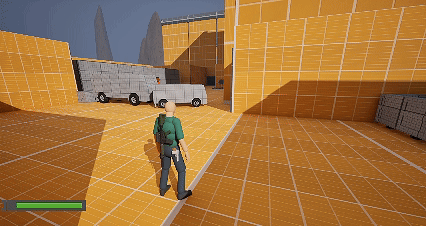
My goal for this blockout is a study piece on Uncharted and the Last of Us to polish my level design skills and create a level that challenges the player
- Traversal zones
- Small puzzles
- Combat areas.
Progress
Top View
Forest
Traversal Area
Outside of Town Hall
First Combat Area
Apartments
Traversal Area
Overview
Setting: Bandits control the town as you hunt for a family heirloom. Meeting survivors provides clues that guide you to City Hall, then the steel mill, where a puzzle guards your prize.
Constraint: A medium-to-large third-person action-adventure level with Uncharted/The Last of Us-style traversal, combat, cutscenes, and crossbow/stealth mechanics.
Narrative Elements
Environmental storytelling: Many of the environmental storytelling elements I use are such as dead bodies with blood on them and graffitiable walls telling a story similar to The Last of Us
Cinematic cutscenes: There are three main cutscenes in the level that are without dialogue, but I use the show, don’t tell technique to help tell a story
Traversal Zones
Town: Climbable yellow bricks and rope swing mechanics.
Mayor’s Office:
- Cabinet interaction (Uncharted-style) to clear a path.
- Ledge shimmy for access.
Combat Areas
Outside of Town Hall: When the player gets out of the tavern, he will face his first enemy encounter. The enemy will be patrolling the area, but there will be lots of different types of cover aiding the player. The player can go guns blazing or stealthily take down.
Inside Town Hall: When the player reaches the town hall, he will have a second enemy encounter. This one will be more of the stuff variety, close quarters, and very narrow passageways.
Forest Entrance: The final enemy encounter will find a player seeing an enemy patrolling the entrance of the forest. I bet this one will also have lots of cover, and the player has two different options.
Walkthrough
Playlist

0:16

0:52

1:00

0:17

0:07

0:17

0:36

0:19

0:10

0:18

0:21
Best Overview
- The player is exploring the town.
- Encountering environmental storytelling through dead bodies and blood on the wall
Best Overview
- The player traverses a building.
- Yellow bricks guide the player toward traversable objects, indicating affordances within the game.
Best Overview
- A cinematic cutscene involving an NPC will play.
- During this cutscene, the player will get a preview of the area ahead.
Best Overview
- In their first enemy encounter, the player can choose between stealth or guns-blazing combat.
- Best 7: Shimming Across
Best Overview
- There will be more environmental storytelling for the player.
- The player must find a clue that will lead them to the next objective.
Best Overview
- The player is lost in the forest. They must find the path to the steel mill.
- The steel mill is large and acts as a “weenie” to guide the player.
- There is a dirt road that acts as an affordance to guide the player to the steel mill.
Best Overview
- Inside the steel mill, the player must find their objective.
- There are moving objects in the area to give the level more life.
Level Design Techniques
One-way valves
I wanted to create a solution so that the player could not go back to the beginning; he would have to continue forward. I came up with the idea that the only way to get down to a certain point was that he would need to rappel down. You rappel down using a rope. This means when the player repels down, there’s no way for him to get back up because the hook is out of range.
Affordance
This level effectively uses visual cues:
- Color Coding: Different colors symbolize gameplay mechanics. For example, yellow bricks indicate climbable objects, while red barricades denote impassable areas.
- Environmental Contrast: A dirt road provides clear guidance through the forest to the steel mill.
Pinching
In one instance in the level, I wanted to follow the player to a specific spot. To do that, I used a technique called pinching. I did it very similarly to how The Last of Us did it in one instance, where they put two cars nearby against each other. By using this technique, I was able to redirect a player where I wanted to easily.
High Ground
During one instance when the player gets out of the mayor’s office, he will see an enemy in the far distance as well as cover and other items. By giving the player the high ground, I have given multiple different ways to solve one problem.
Process breakdown:
1: Research, ideation and planning
To design an Uncharted-style level, I
- Established a third-person action-adventure framework with comparable mechanics.
- Analyzed:
- The Last of Us for level layout.
- Hitman for open-world engagement strategies.
- The Silent Hill remake for atmosphere and fog implementation.
- Drew inspiration from real-world small towns and other media to enrich design concepts.
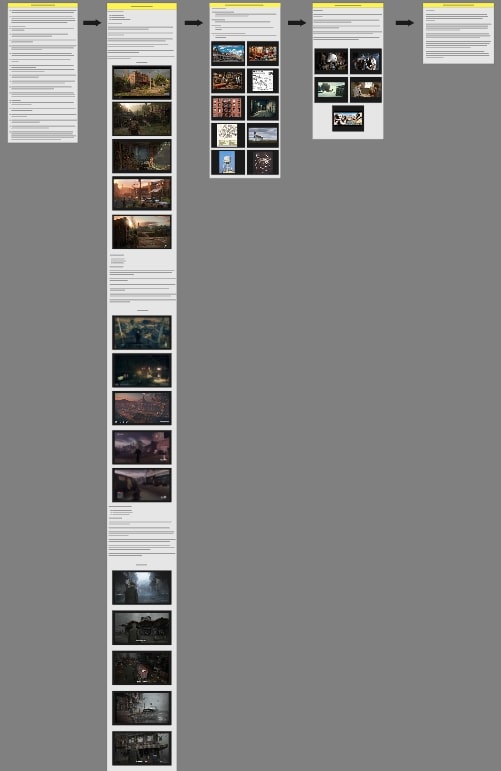
2: Level Design Document
2:Leveraging a provided example, my linear level design involves:
- Core Concept: Reclaiming a family heirloom from bandits in a small town.
- Design Pillars:
- Established objectives and narrative elements (context, environment, tone, theme).
- Uncharted-inspired gameplay mechanics.
- Balanced traversal, combat, cinematic cutscenes, and an environmental puzzle.
- Pacing: Film-like intensity curve to ensure varied gameplay beats.
3: 2D Map
3: 2D MapHere’s a more concise rephrasing using bullet points:
My level design process begins with a pen-and-paper prototype outlining:
- Layout
- Combat, traversal, and cinematic zones
- Color-coded interactive elements
This initial sketch incorporates key principles:
- Section-specific mechanics
- Collectible rewards for exploration
- Defined enemy patrols
- Frequent player engagement
The final digital level closely follows this blueprint, with minor expansions (town hall, forest) and a simplified final encounter (environmental puzzle instead of a large gunfight).
4: Blockout, Iteration, and Feedback
- Zoning: Initial blockout prioritized distinct zones for combat, separated by:
- Traversal
- Narrative beats (cutscene then enemy)
- Design Focus: This sequencing streamlined early design, avoiding simultaneous mechanic integration.
- Environment: Simple geometric shapes represented the small-town setting (buildings, furniture), with basic structures for landmarks (town hall, steel mill).
- Scope Management: Informed by feedback on an overscoped 2D map, the aim was a manageable scope, leveraging Unreal Engine experience and the project template for efficient feature implementation.
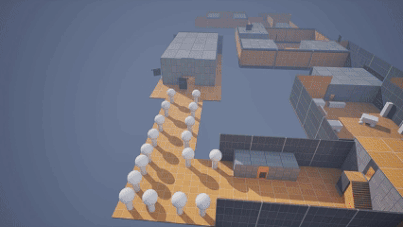
Feedback
After completing my first blockout, I received some feedback on some crucial elements of my layout. This was the following feedback I got from my layout:
- The metrics of the building and doors feel a little bit off
- The forest section is very small
- Implement uneven terrain and random tree placement
- Be very careful of having the player collect a note for him to read many players will miss that
Second Iteration
After getting feedback on what I needed to iterate on, I decided to go back to my project and iterate on these key things.
- Change the sizes of all buildings and doorways to closely resemble real-life metrics.
- Change the entire layout of the steel mill, making it bigger and with less open room.
- Expand upon the force area while also adding random tree placement.
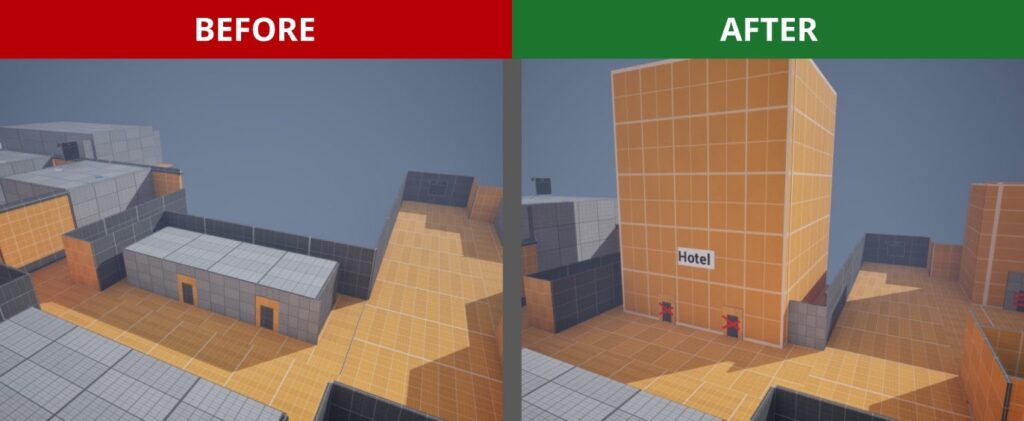
Problem: I got a lot of feedback regarding the size and metrics of my building’s doorways. The building felt very small compared to real-life buildings and work, immersing the player. Also, the doorways gave the camera some problems.
Solution: I decided to do a deeper dive into the metrics of real-life buildings, such as hospitals and hotels. This led me to increase the size and the width of many of the buildings throughout the level. Also, I increased the door size by Fairmount by using a game model as reference.
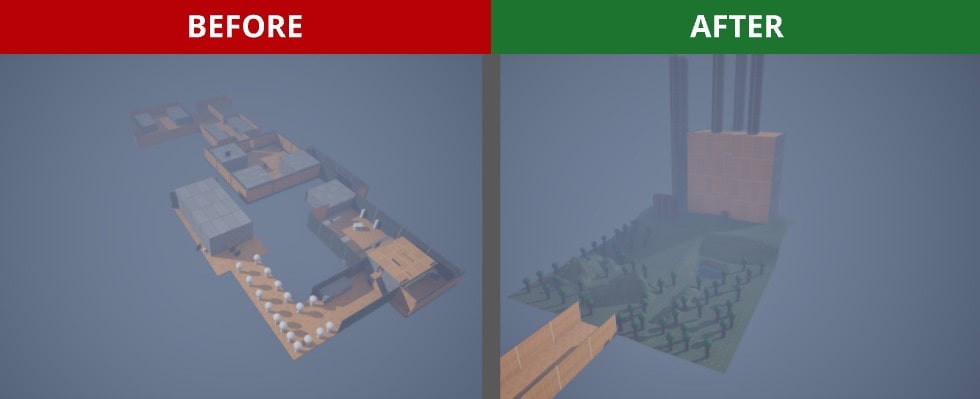
Problem: There was a lot of feedback I got from the fourth section of the level. Much of it was that it didn’t feel like a forest. It was very small; there were no uneven hills or even random tree placements.
Solution: I used Unreal Engine’s landscape mode to create four sections with many different uneven hills. I then decided to use another tool to create random placements for trees. On top of all that, I put the steel mill on top of the hill so that the player could easily find it.
Third iteration
Feedback
Here’s some of the feedback I got from the third iteration.
- Building Interiors: Scale and size appear unrealistic in some areas.
- Level Boundaries: Implement blockers to prevent players from exiting the intended play area.
- Forest Navigation: Add affordances to guide players and prevent them from getting lost.
Iteration
After getting feedback on what I needed to iterate on, I decided to go back to my project and iterate on these key things.
- Traversal: Added a ladder for easier access in the traversal area
- Landscape: Expanded the forest and introduced hills and buildings.
- Narrative: Implemented a cinematic cutscene.
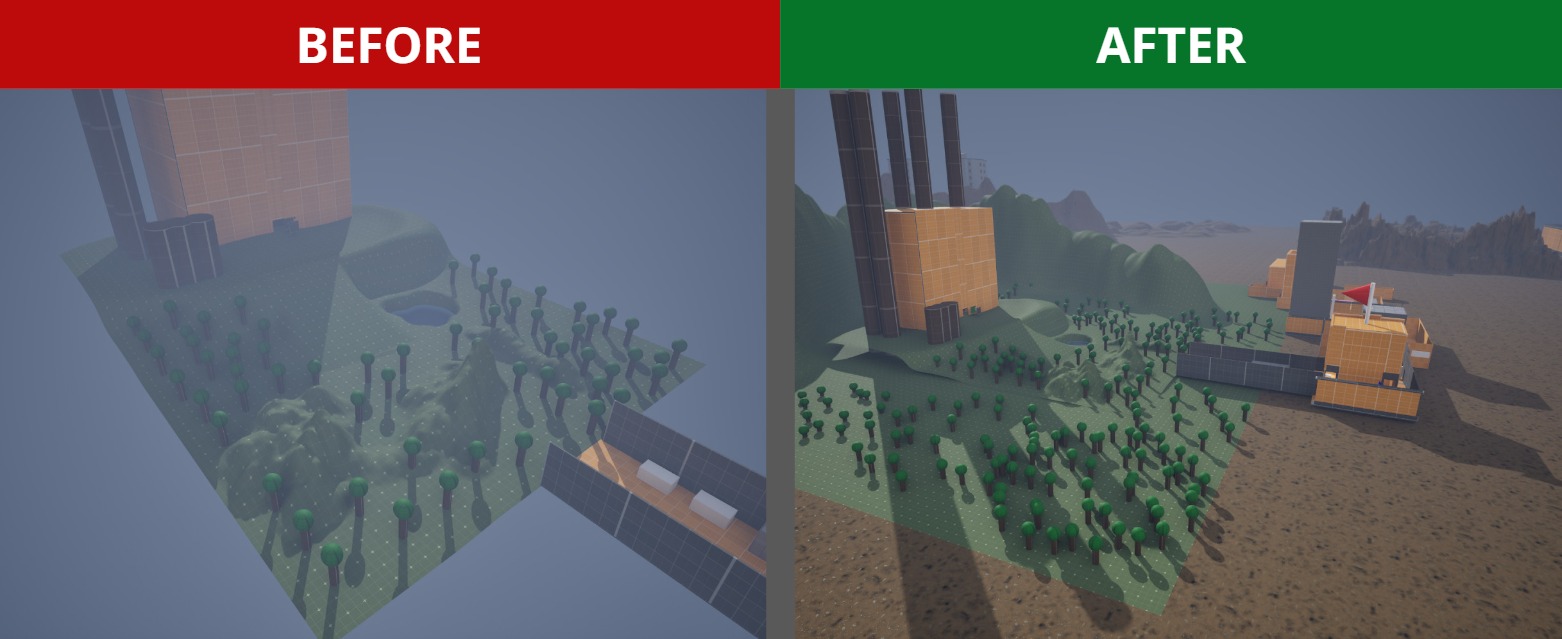
Problem: The forest areas still felt small and weren’t fully immersing the player.
Solution: Dive deeper into Unreal Engine’s landscape mode. Adding a big hill right behind the forest, and adding a dirt field around the forest to make it pop
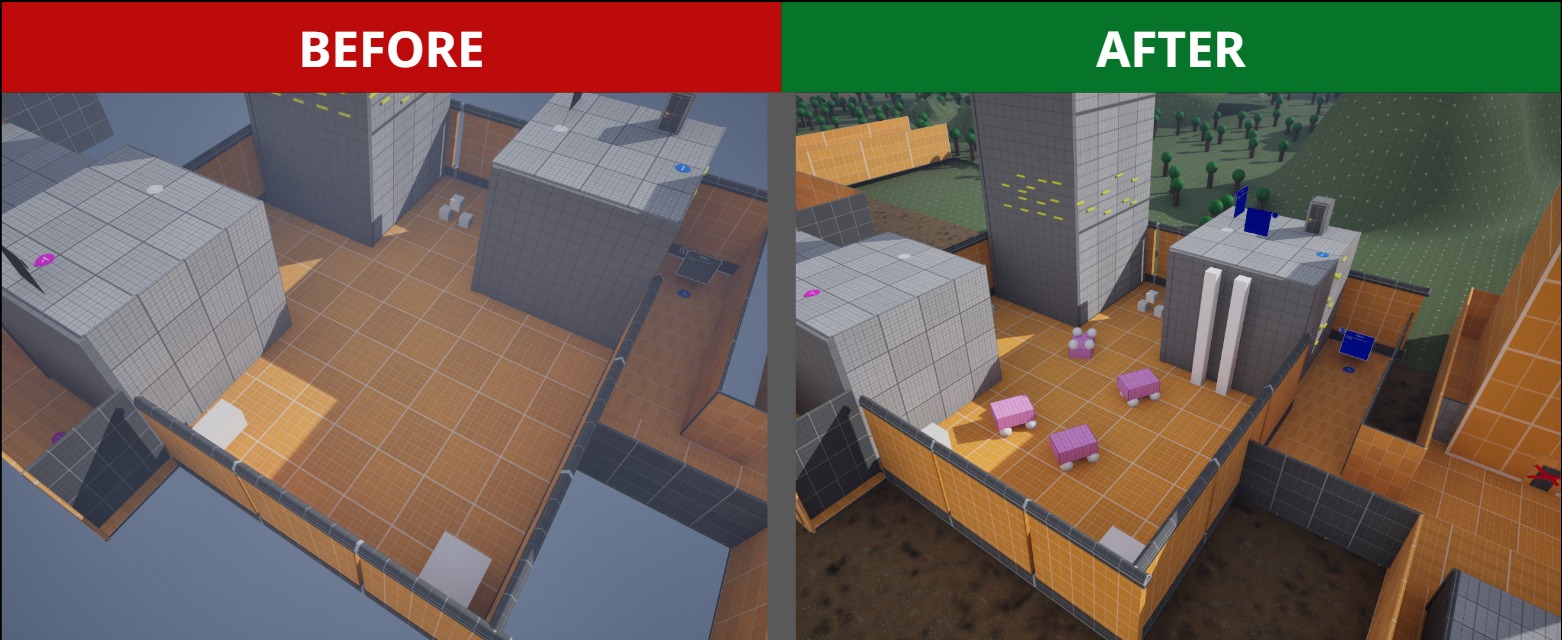
Problem: Parts of the level still feel very empty; there’s a lot of open space, especially in the traversal area.
Solution: I decided to put down multiple simple geometry objects and make them into unique objects that will blend into the world, such as cars, crates, barrels, and more.
Fourth iteration
Feedback
Here’s some of the feedback I got from the Fourth iteration.
- The combat space in front of the Town Hall feels very bare and not easy to move around in.
- Add more cover around the area. To make the area more challenging for the player
- The long wire that was used to affordance to leave the player at the steel mill does not make sense.
Iteration
After getting feedback on what I needed to iterate on, I decided to go back to my project and iterate on these key things.
- Refined Cinematic: Replace existing objects for a more visually appealing introduction.
- Improved Navigation: Substitute basic signs with higher-quality versions and change the long wire to the steel mill into a simple dirt road.
- Updated Interiors: Redesigned many key interior locations, including the town hall, steel mill, and mayor’s office.
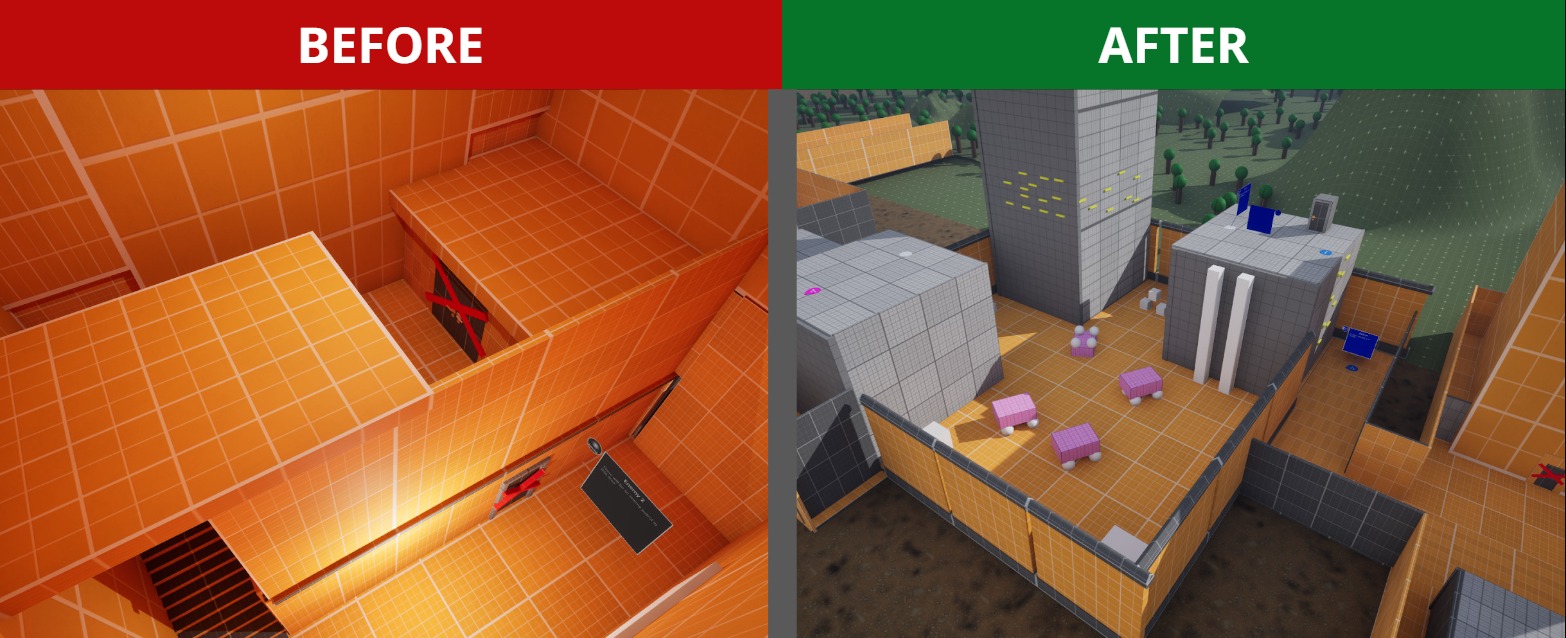
Problem: The area inside the Town Hall was very simple and not very challenging for the player.
Solution: Redid the entire space and also added another enemy encounter and an interactable sequence in that area.
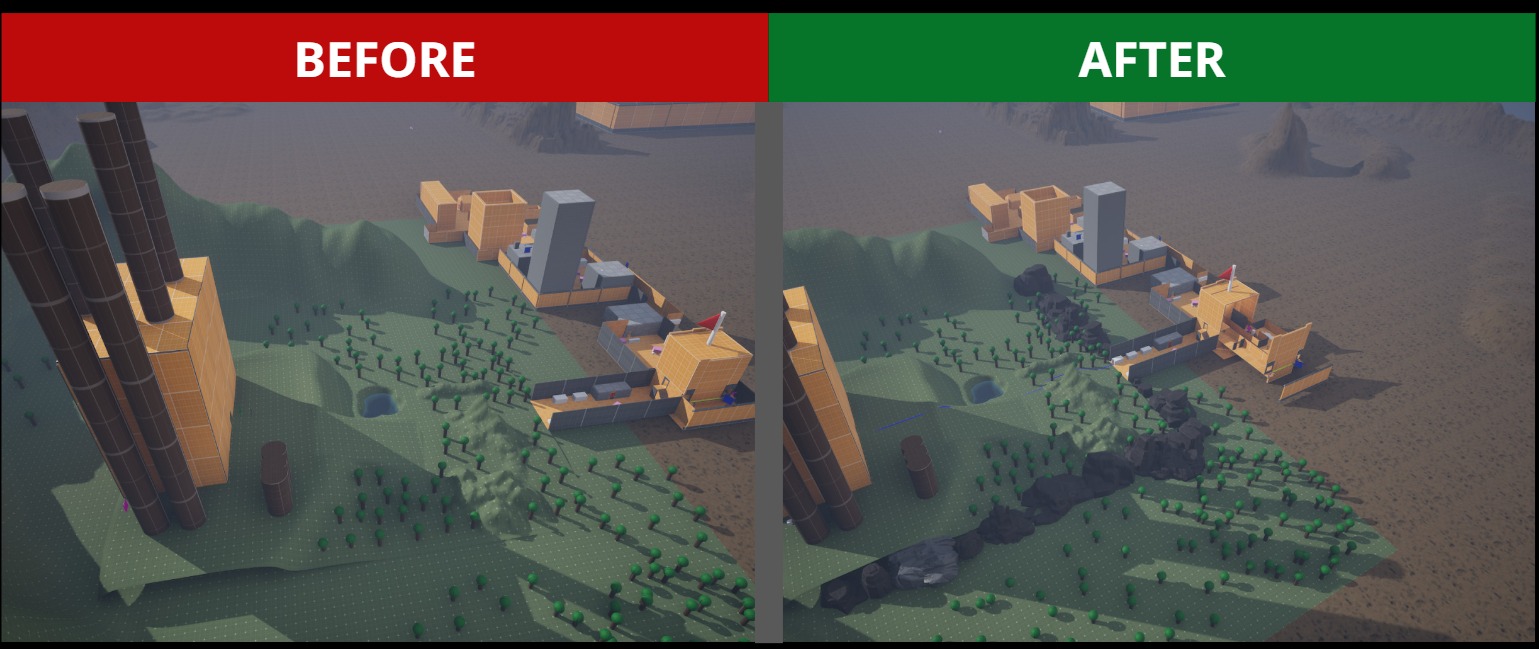
Problem: The player kept venturing outside of the force area.
Solution: I added blockers in the form of rocks around the forest area so the player cannot venture out.
Fifth iteration
Feedback
Here’s some of the feedback I got from the fifth iteration.
- The traversal area of the fence is not big enough, and the player can sometimes go over it.
- The combat space, while three works are good, still needs a little more work
- Great attention to detail in the Cinematic cutscene
Iteration
After getting feedback on what I needed to iterate on, I decided to go back to my project and iterate on these key things.
- Made the fence bigger in the traversal area so the player does not break out of balance.
- Revise combat area cover with varied shapes for a more challenging experience.
- Increased lighting in darker areas for improved player visibility.
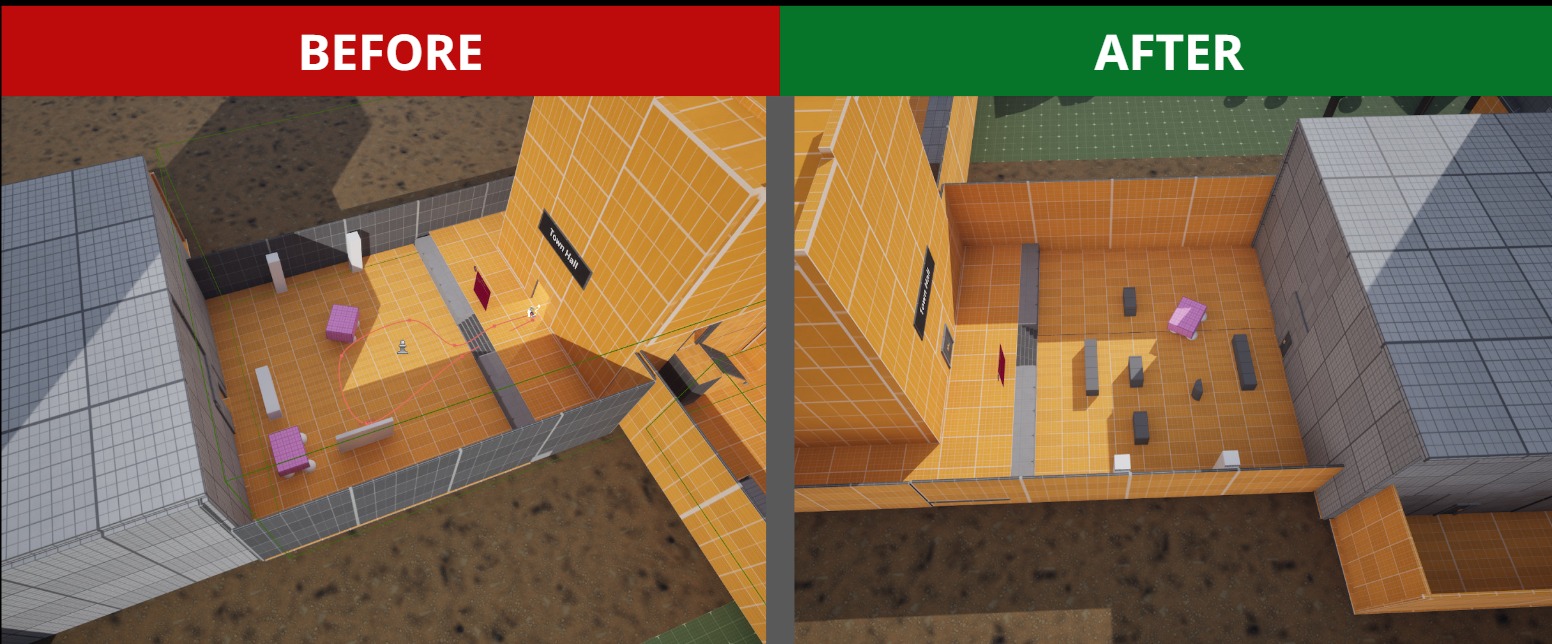
Problem: The combat space outside of the Town Hall still needs a little more work.
Solution: Add more simple geometry shapes such as cubes, rectangles, cars, and barrels to make a more challenging combat space. 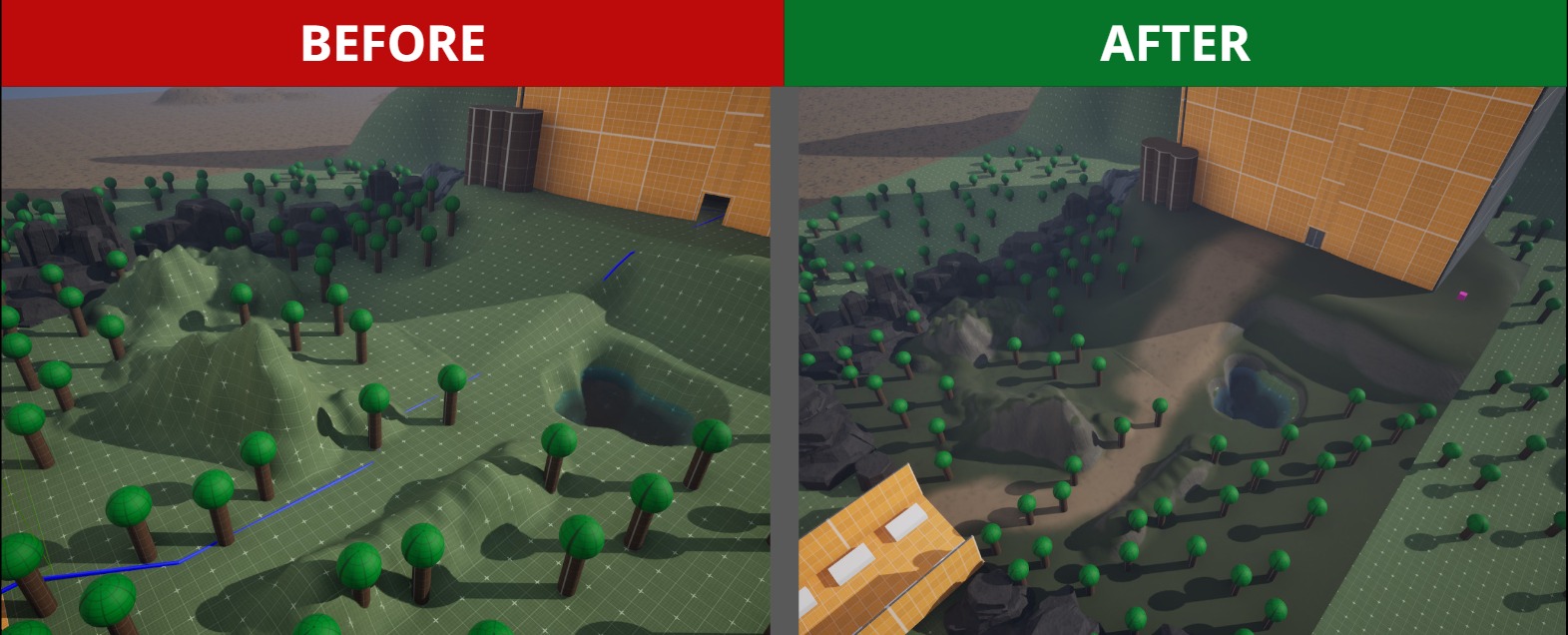
Problem: The long wire extending to the steel mill in the forest did not make much sense in terms of the game story.
Solution: I simply replace the long wire with a simple dirt road for an easier dance for the player.
Sixth iteration
Feedback
Here’s some of the feedback I got from the sixth iteration.
- Implemented checkpoints to prevent players from restarting the entire level.
- Tightened the jump requirement in the traversal area, demanding near-perfect execution.
- Animated objects in the steel mill significantly enhanced the level’s liveliness.
- The combat area felt polished and well-designed after multiple iterations.
Iteration
After getting feedback on what I needed to iterate on, I decided to go back to my project and iterate on these key things.
- Replaced simple cube collectibles with actual art asset chests.
- Replaced simpler level geometry with refined shapes.
- Revised a combat space, adding more death and interesting objects.
- Created a blueprint to add blood to dead bodies.
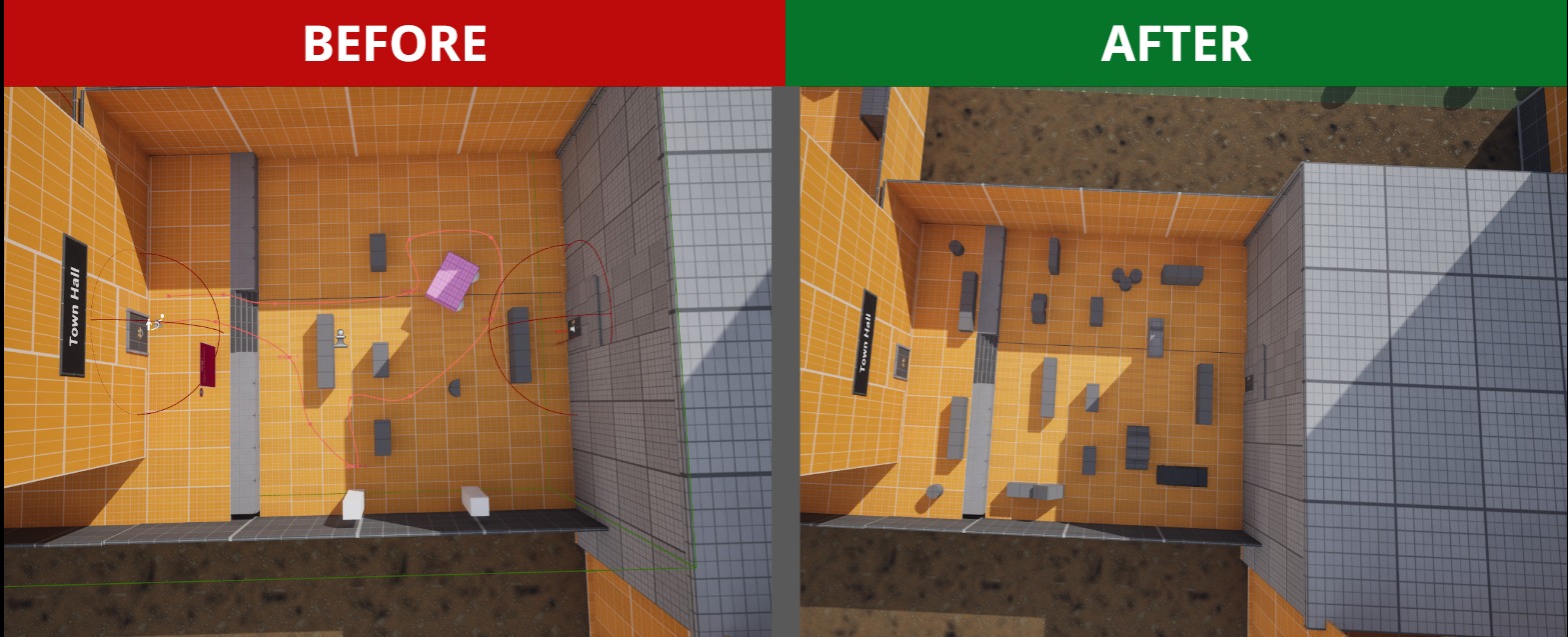
Problem: The combat space outside of the Town Hall still needs a little more work.
Solution: Add more simple geometry shapes such as cubes, rectangles, cars, and barrels to make a more challenging combat space.
Playtest Iteration
Feedback
I did multiple rounds of testing with players, and this is the feedback I got
- In the traversal area, the players do not know that they have a hook item that they have to use.
- They are unaware they possess a necessary hook item.
- Received no reward for exploring specific areas.
- Completely missed the environmental storytelling in the initial area.
- Can engage enemies before they enter the designated combat space.
- They were targeted by enemy AI in an unseen specific area.
- Did not experience the intended “pinching” level design technique in the starting area.
- Found empty chests upon opening them.
- Can pass through certain objects due to a lack of collision in the traversal area.
Iteration
- Traversal Area: Replace fence (no collision). Add landing pads for jumps. Lower the yellow bridge for easier crossing. Add a red barricade on a door.
- Loot & Placement: Add gold to the chest and relocate it.
- Enemy Engagement: Reposition combat space objects to prevent out-of-bounds shooting.
- Environment Detail: Move graffiti and dead bodies to the main area. Adjust truck positions for a better pinch point.
- Player Guidance: Display a simple “Q” icon and text near the rope hook.
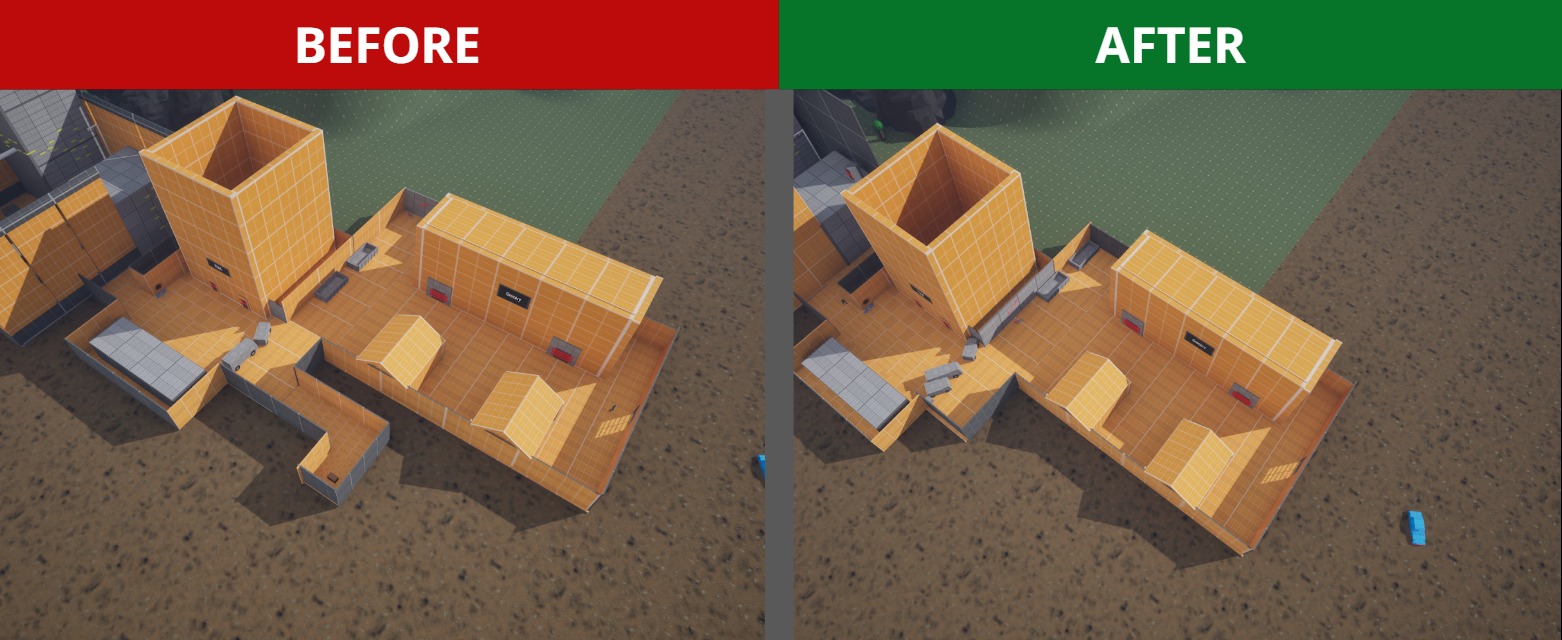
Problem: In the traversal area, the player did not know he had a hook item; many of the playtesters were confused about what to do during the hook section.
Solution: When the player gets near a hook object, there will be a sphere collider that, when it registers the player, will show a little icon that says hook, so the player can click on that icon and equip the hook.

Problem: The combat space, after many revisions, still locked a few things, such as multiple covers in the outer region, and the patrol path needed to be changed.
Solution: I added objects in the outer region of the combat space. I also added more unique objects, such as barrels, cars, and cylinders. I altered the enemy patrol path because of all these new objects.
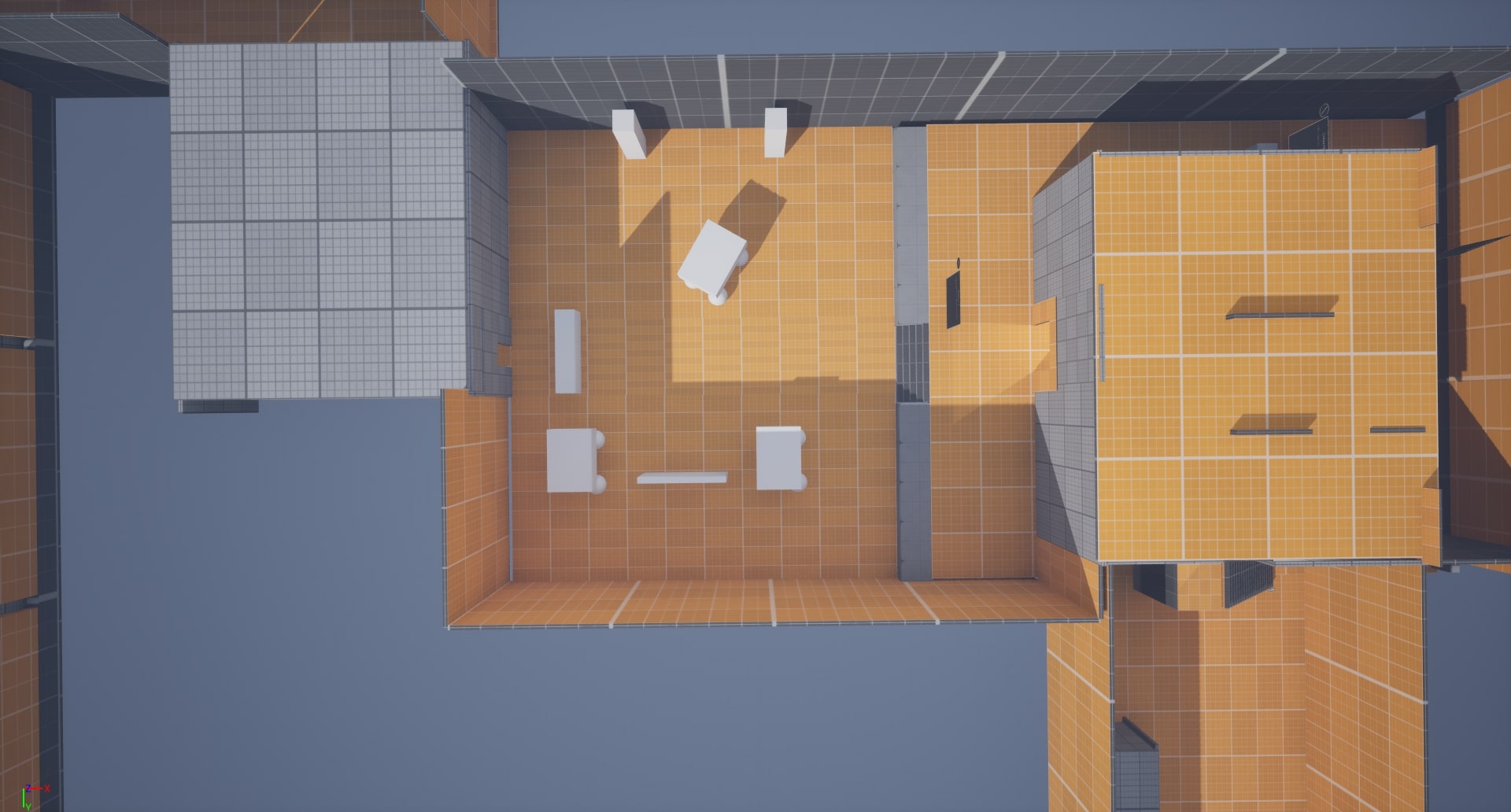
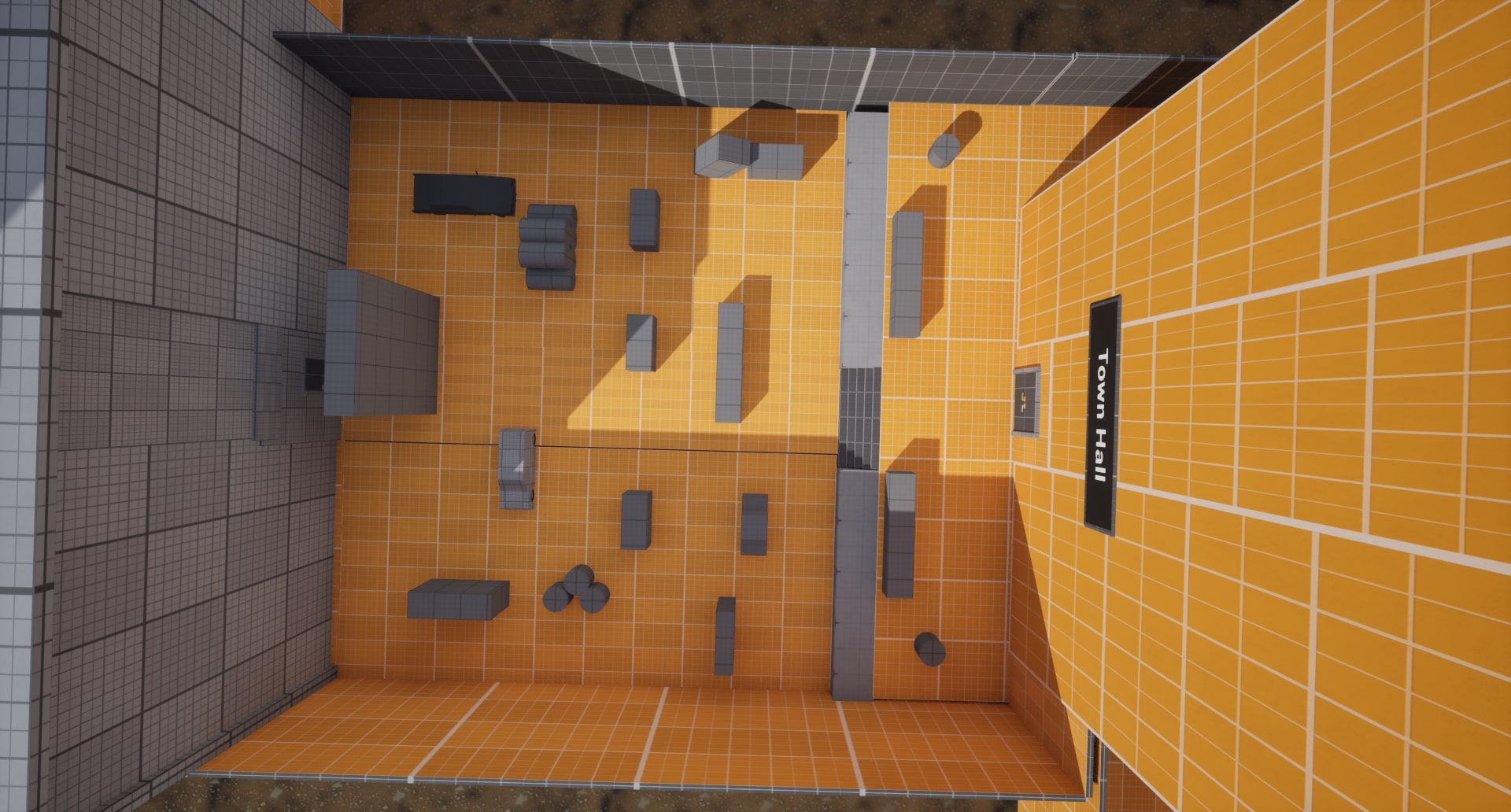
Gallery
